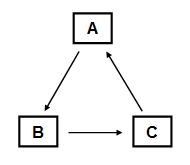僕の嫌いなSEOのひとつに、「相互リンク」があります。
相互リンク先を見つけるおっくうな作業を続け、依頼を受け入れてもらいやすくするために、相手のサイトの気に入ったところを無理してでもヨイショしてメールを送り(笑)、来るかどうかも分からない返事を待つ。
僕がサイトを作り始めたころは相互リンクが絶頂の時期で、初めてインターネットに公開したサイトも相互リンクを集めるのに労力を費やしました。
でも、相互リンクを集めたのはそのサイトだけです。
それ以降、自ら進んで相互リンクを構築することはまったくしていません。
検索エンジンの相互リンクに対するスタンスはどうなのでしょう?
Googleは、ランキングに悪影響を与えるガイドライン違反のひとつとして、「相互リンクおよび相互リンクの制限超過」というリンクプログラムを挙げています。
・・・相互リンクに参加している一部のウェブマスターは、リンクの品質、ソース、他のサイトに与える長期的な影響を無視して、相互リンクだけを目的としたパートナー ページを作成しています。これは Google のウェブマスター向けガイドラインに対する違反となり、検索結果におけるサイトのランキングに悪影響を与える可能性があります。リンク プログラムには次のようなものがあります。
- PageRank の操作を意図したリンク
- ウェブ スパマーや不正なウェブサイトへのリンク
- 相互リンクおよび相互リンクの制限超過
- PageRank を転送するリンクの売買
Yahoo!も、本質的にGoogleと同じです。
Yahoo! Search Content Quality Guidelinesには、次のように記載されています。
What Yahoo! Considers Unwanted:
…
- Sites cross-linked excessively with other sites to inflate a site’s apparent popularity (link schemes)
…
対応する日Yahoo!のインフォセンターでの説明です。
検索エンジンスパムとは
・・・
- 過度な相互リンクを行い、サイトの認知度を不自然に上昇させているウェブページ
・・・
こんな中、Yahoo!が、”Identifying excessively reciprocal links among web entities“という相互リンクに関する新しいPatent(パテント:特許)を取得しました。
日本語に直すと、「ウェブのエンティティにおける行き過ぎた相互リンクの識別」になります。
※エンティティ(entity)は存在や実体の意、reciprocal linkは相互リンク
ポイントとなる部分を引用します。
Abstract
A method for identifying reciprocal links is provided. At a particular host, the set of hosts which link to the particular host and the set of hosts to which the particular host links are determined. The intersection and union of the two sets of hosts are also determined, and the sizes of the intersection and union are calculated. The concentration of reciprocal links at the particular host is calculated based on the sizes of the intersection and union. A ratio of the intersection size to the union size is used to determine the concentration of reciprocal links. The particular host’s rank in a list of ranked search results may be changed as a result of identification of a high concentration of reciprocal links.
[0005]For example, if a search engine ranks a web page based on the value of some attribute of the web page, then the web page’s author may seek to alter the value of that attribute of the web page manually so that the value becomes unnaturally inflated. For example, a web page author might fill his web page with hidden metadata that contains words that are often searched for, but which have little or nothing to do with the actual visual content of the web page. In another example, a web page author adds to a web page many incoming hyperlinks, also called inlinks, based on the observation that web pages more frequently referenced by other web pages are generally considered by search engines as being of higher relevance. One method used by web page authors to increase the number of inlinks in web pages is to create web pages with “reciprocal links,” where two web pages both link to each other, resulting in an increased number of inlinks for each reciprocally linked web page.
[0006]When web page authors engage in these tactics, the perceived effectiveness of the search engine is reduced. Spurious references to web pages which are not useful for users and are meant to boost search rankings sometimes push poorer results above web pages that users have previously found interesting or valuable for legitimate reasons. Thus, it is in the interests of those who maintain the search engine to “weed out,” from search results, references to web pages that are known to have been artificially manipulated in the manner discussed above.
[0007]Therefore, there is a need for an automated way of identifying web pages that are likely to have been manipulated in a manner that artificially inflates the rankings of those web pages within lists of search results. Specifically, there is a need for an automated way of identifying web pages whose numbers of inlinks have been artificially boosted by reciprocal links in an effort to achieve higher rankings for those web pages.
英語嫌いな読者さんは、ここで離脱しそうですね。(笑)
長いし、難しめの表現もあるので全訳は遠慮しておきます。
要点をまとめると次のようになります。
相互リンクの割合が過密になると、検索結果に変更を与えるかもしれません。
隠しテキストのように人為的にランキングを上げる手段として、リンク獲得のための相互リンクがあります。
ユーザーにとって有益な結果を適切に返すために、順位上昇を狙った相互リンクを自動的に検知する仕組みが必要になります。
僕は相互リンク自体が嫌いですが、Yahoo!がすべての相互リンクを否定しているわけではありません。
正当な理由があれば、相互リンクの割合が高くても容認されます。
(記事タイトルの「相互リンクSEOの時代は終わった」というのは、引き付けのためです(笑))
For example, a particular web page may have many reciprocal links with a group of web pages because these web pages discuss the same subject matter in a complementary fashion and the web page authors have found it expedient for those web pages to refer to each other.
In another example, two groups of web pages refer to each other reciprocally because those groups belong to two company web sites where the companies are part of the same conglomerate.
たとえば、同じテーマを取り扱っていて、補完し合うとユーザーにとって得策な場合の相互リンクや、グループ企業として会社同士がリンクしあう場合です。
また、Yahoo!のように認知度があって正当なサイトであれば、”White List(ホワイト・リスト)”として対象から外れることもあります。
ポイントとなるのは、パテントのタイトルにある“excessively”です。
「過度に、行き過ぎて」という意味です。
全体のリンクに占める割合が、基準値に対して高いとランキングの低下、あるいはインデックス削除という処置がとられます。
気になるのはその「基準値」ですが、それはパテントでは触れられていません。
でも、20個のリンクがあって、その20個がすべて相互リンクだとしたら問題があるでしょうね。
超過相互リンクを検知するのは、自動化されたアルゴリズムによってですが、誤検知があるかもしれないので、即刻対応がとられるわけではありません。
怪しいと判断されたサイトには、要注意として「フラグ」が立てられ、人間の目によるマニュアルレビューが行われるようです。
相互リンクというと、2つのサイト間でのリンクを想像しますが、「3方向リンク」で説明したように、「サイトA ⇒ サイトB ⇒ サイトC ⇒ サイトA」のように、ぐるぐる循環して直接でない間接的なリンクであっても、相互リンクとしてみなされます。

図は3つですが、4つでも5つでも、それ以上でも相互リンクとしてみなされることはあります。
また、個別ページへのリンク、ディープリンクであってもサイト間でリンクし合っていれば相互リンクです。
時には、サブドメイン間であっても、相互リンク扱いされるかもしれません。
この記事で解説したのはパテントについてです。
特許ですから、実装されているとは限らないし、実装されていたとしても一部かもしれませんし、修正が加わっていることも考えられます。
ですから、「相互リンクが無意味」だというわけではありません。
ですが、ランキングを上げることだけを目的としたユーザーの利点を考えない相互リンクは、長い目で見れば効果がなくなるでしょう。
相互リンク構築に費やす労力を、充実したコンテンツを増やす労力に費やすべきではないかと、僕は感じます。
